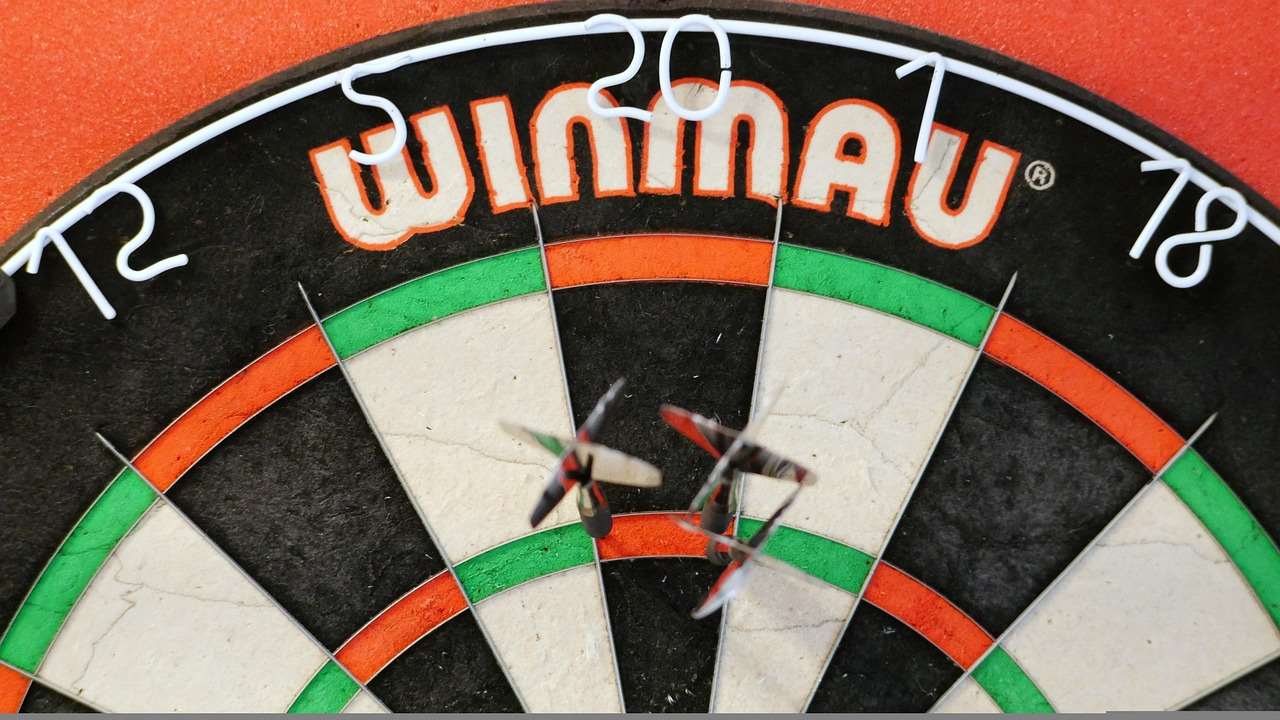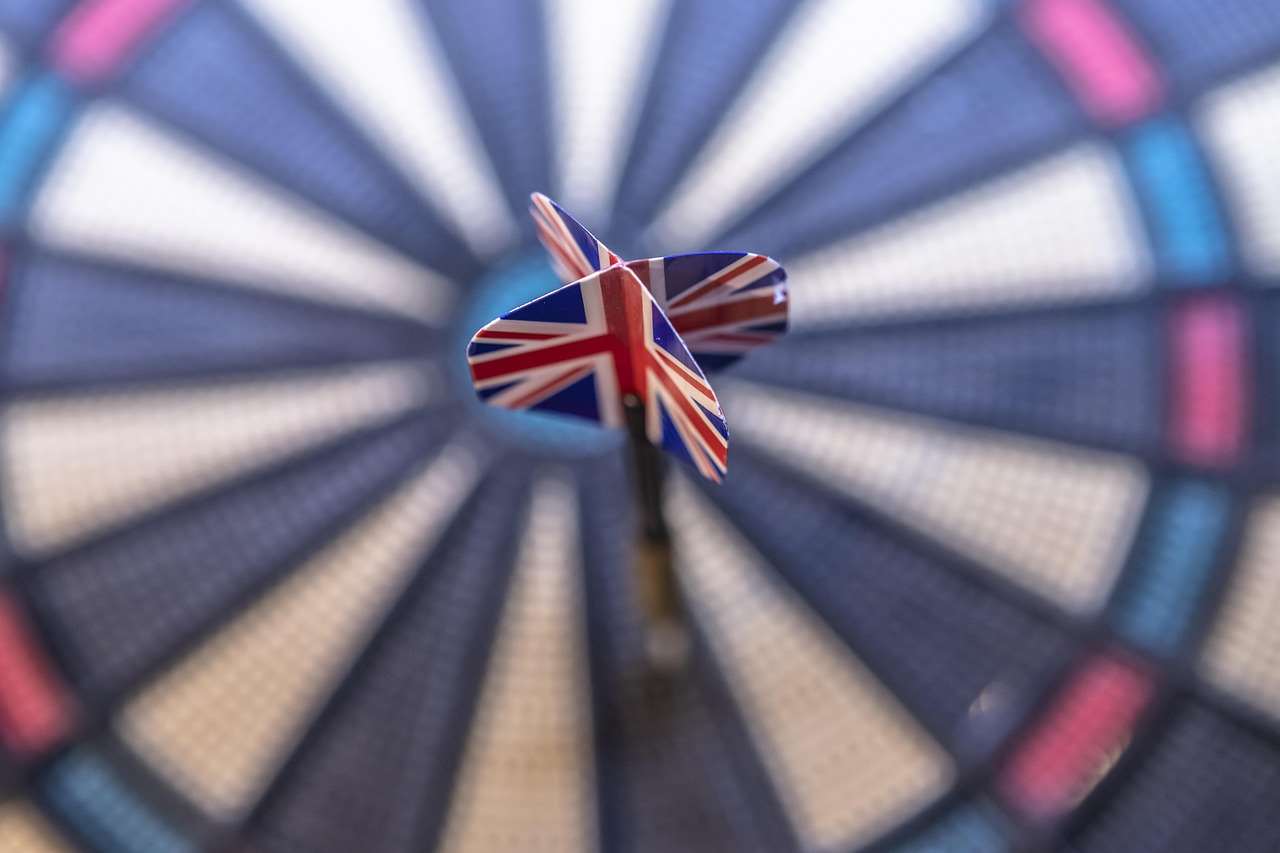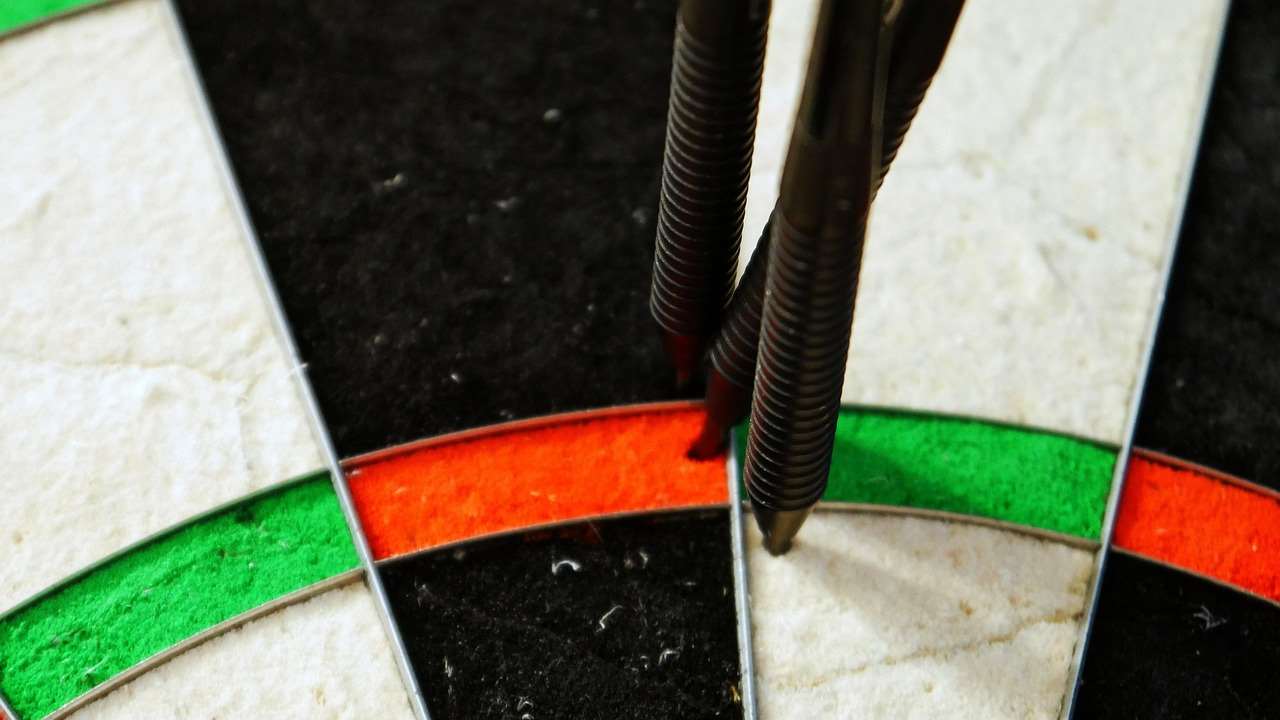Understanding Pub Darts Noise Levels is crucial for creating a welcoming and enjoyable atmosphere. This article delves into the various factors contributing to the noise in pubs during darts games and offers practical solutions for managing it, ensuring everyone has a good time.
⚠️ Still Using Pen & Paper (or a Chalkboard)?! ⚠️
Step into the future! The Dart Counter App handles all the scoring, suggests checkouts, and tracks your stats automatically. It's easier than you think!
Try the Smart Dart Counter App FREE!Ready for an upgrade? Click above!
Understanding the Sources of Pub Darts Noise Levels
The soundscape of a pub during a darts match is a complex mix. It’s not just the thud of darts hitting the board, but a combination of factors that collectively determine the overall ambient noise level. Identifying these sources is the first step toward managing them effectively. The goal is to create a lively, yet comfortable environment. To further understand this, you might want to read Darts Culture And Community Guide.
The Impact of Darts Equipment on Noise Levels
The type of dartboard and the surrounding setup play a significant role in influencing the noise level. Here’s how:
- Dartboard Material: Sisal dartboards, commonly used in pubs, are relatively quieter than electronic dartboards. Electronic boards often have hard plastic segments, leading to a louder impact when darts hit them.
- Backboard and Surround: A backboard behind the dartboard can help dampen the sound and protect the wall. A surround, typically made of rubber or foam, further reduces noise by absorbing the impact of stray darts.
- Dart Weight and Tip: Heavier darts or darts with sharp steel tips can produce a more noticeable sound upon impact.

The Role of Players and Spectators in Pub Darts Noise Levels
The behavior of players and spectators significantly contributes to the noise levels in a pub. Consider the following:
- Excitement and Cheers: Enthusiastic cheers and reactions to good throws are part of the fun, but excessive shouting can be disruptive.
- Conversations and Socializing: The buzz of conversations among players and spectators adds to the overall sound levels.
- Number of People: A crowded pub will naturally be louder than one with fewer patrons.
Acoustics of the Pub Environment Affecting Pub Darts Noise Levels
The physical characteristics of the pub itself can amplify or dampen the sounds generated during darts games. Key factors include:
- Room Size and Shape: Larger rooms tend to have more echo, while smaller, irregularly shaped rooms may absorb sound better.
- Surface Materials: Hard surfaces like concrete, tile, and glass reflect sound, increasing noise levels. Softer materials like carpets, curtains, and upholstered furniture absorb sound, reducing noise.
- Ceiling Height: High ceilings can contribute to echo, while lower ceilings may help contain sound.
Strategies for Managing Pub Darts Noise Levels
Effectively managing Pub Darts Noise Levels involves implementing strategies that address the various noise sources identified above. A proactive approach ensures a more enjoyable experience for everyone.
Optimizing Dartboard Setup to Reduce Noise
Modifying the dartboard setup can significantly reduce the impact sound and vibrations. Consider these suggestions:
- Install a High-Quality Sisal Dartboard: Choose a well-made sisal dartboard known for its sound-dampening properties.
- Use a Dartboard Surround: A surround made of thick foam or rubber will absorb the impact of stray darts and minimize noise.
- Mount a Backboard: A sturdy backboard made of cork or wood behind the dartboard will protect the wall and further dampen sound.
- Consider Soft-Tip Darts: For electronic dartboards, using soft-tip darts can reduce the impact noise compared to steel-tip darts.
- Wall Treatment: Adding acoustic panels near the dartboard can help absorb sound and reduce reverberation.

Managing Player and Spectator Behavior to Control Noise
Encouraging considerate behavior from players and spectators is essential for maintaining a reasonable noise level. Consider these approaches:
- Establish Clear Guidelines: Communicate expectations regarding acceptable noise levels to players and spectators.
- Encourage Moderate Celebrations: Promote enthusiastic but controlled reactions to good throws.
- Provide Designated Social Areas: Create separate areas for socializing away from the dartboard to minimize distractions and noise.
- Implement Quiet Zones: Designate specific areas as “quiet zones” for patrons who prefer a more relaxed environment.
- Offer Noise-Cancelling Headphones: Consider offering noise-cancelling headphones to patrons who are sensitive to noise.
Improving Pub Acoustics to Reduce Noise Levels
Making changes to the pub’s physical environment can significantly improve its acoustic properties and reduce noise levels. Consider these options:
- Install Acoustic Panels: Acoustic panels on walls and ceilings absorb sound and reduce reverberation.
- Add Soft Furnishings: Carpets, rugs, curtains, and upholstered furniture absorb sound, softening the overall noise level.
- Use Sound-Absorbing Ceiling Tiles: Replace existing ceiling tiles with sound-absorbing tiles to reduce echo and reverberation.
- Install Bass Traps: Bass traps in corners of the room can absorb low-frequency sounds that contribute to overall noise.
- Add Plants: Plants can help to absorb sound and reduce reverberation.
Measuring and Monitoring Pub Darts Noise Levels
Regularly measuring and monitoring Pub Darts Noise Levels can help identify problem areas and assess the effectiveness of implemented noise management strategies. You can find the ideal Best Seats At Live Darts to help monitor these noise levels.
Using Sound Level Meters to Assess Noise Levels
A sound level meter is a device used to measure the intensity of sound in decibels (dB). It can provide accurate and objective data on noise levels in the pub during darts games. Here’s how to use it effectively:
- Choose a Reliable Meter: Select a sound level meter that meets industry standards for accuracy.
- Take Measurements at Various Locations: Measure noise levels at different points in the pub, including near the dartboard, in seating areas, and near the entrance.
- Record Measurements at Different Times: Take measurements during peak hours and quiet periods to get a comprehensive understanding of the noise levels.
- Compare Measurements: Compare the measured noise levels with recommended guidelines for acceptable noise levels in pubs.
- Monitor Trends: Track noise levels over time to identify any trends or patterns.

Establishing Noise Level Thresholds and Guidelines
Setting clear noise level thresholds and guidelines can help maintain a comfortable environment and prevent excessive noise. Consider these steps:
- Research Recommended Noise Levels: Consult industry guidelines and regulations for acceptable noise levels in pubs and recreational spaces.
- Set Specific Thresholds: Establish specific dB thresholds for different areas of the pub, such as near the dartboard, in the bar area, and in dining areas.
- Communicate Guidelines to Staff and Patrons: Clearly communicate the established noise level guidelines to staff and patrons.
- Enforce Guidelines Consistently: Ensure that staff consistently enforce the noise level guidelines.
- Review and Adjust Thresholds: Regularly review and adjust the noise level thresholds based on feedback and monitoring data.
Technology and Innovative Solutions for Reducing Pub Darts Noise Levels
Technology offers several innovative solutions for managing and reducing Pub Darts Noise Levels. These tools can enhance both the playing experience and the overall pub environment.
Noise-Cancelling Technology for Improved Comfort
Noise-cancelling technology can be used to create quieter zones and improve the comfort of patrons who are sensitive to noise. Consider these options:
- Noise-Cancelling Headphones: Offer noise-cancelling headphones to patrons who want to reduce ambient noise.
- Acoustic Barriers: Use portable acoustic barriers to create quieter areas within the pub.
- Sound Masking Systems: Install sound masking systems that generate subtle background noise to cover up disruptive sounds.

Smart Sound Management Systems for Dynamic Control
Smart sound management systems can automatically adjust noise levels based on real-time conditions. Here’s how they work:
- Real-Time Monitoring: The system uses sensors to continuously monitor noise levels in different areas of the pub.
- Automatic Adjustments: Based on the measured noise levels, the system automatically adjusts the volume of music, PA systems, or other sound sources.
- Customizable Settings: The system can be customized to meet the specific noise level requirements of the pub.
- Remote Control: The system can be controlled remotely via a smartphone or tablet.
If you are planning to visit some venues, check out our What To Expect At Live Darts guide for better experience.
Integrating Smart Technology with Pub Management Systems
Smart technology can be integrated with existing pub management systems to provide comprehensive noise management solutions. This integration allows for better coordination and control of various aspects of the pub environment.
- Centralized Control: Integrate the smart sound management system with the pub’s lighting, HVAC, and security systems for centralized control.
- Data Analytics: Use data analytics to identify trends in noise levels and optimize noise management strategies.
- Automated Alerts: Set up automated alerts to notify staff when noise levels exceed established thresholds.

Conclusion
Managing Pub Darts Noise Levels is a multifaceted challenge that requires a proactive and comprehensive approach. By understanding the sources of noise, implementing effective noise reduction strategies, and leveraging technology, pubs can create a more enjoyable and comfortable environment for everyone. Consider optimizing your dartboard setup, managing player behavior, and improving pub acoustics to minimize noise disruptions. Regularly measure and monitor noise levels, establish clear guidelines, and explore innovative solutions such as noise-cancelling technology and smart sound management systems. By taking these steps, you can ensure that your pub remains a welcoming and vibrant hub for darts enthusiasts and casual patrons alike. Now, take action and implement these strategies to improve your pub’s atmosphere today! For more information, you may want to review our Travel Tips For Darts Tournaments.
Hi, I’m Dieter, and I created Dartcounter (Dartcounterapp.com). My motivation wasn’t being a darts expert – quite the opposite! When I first started playing, I loved the game but found keeping accurate scores and tracking stats difficult and distracting.
I figured I couldn’t be the only one struggling with this. So, I decided to build a solution: an easy-to-use application that everyone, no matter their experience level, could use to manage scoring effortlessly.
My goal for Dartcounter was simple: let the app handle the numbers – the scoring, the averages, the stats, even checkout suggestions – so players could focus purely on their throw and enjoying the game. It began as a way to solve my own beginner’s problem, and I’m thrilled it has grown into a helpful tool for the wider darts community.